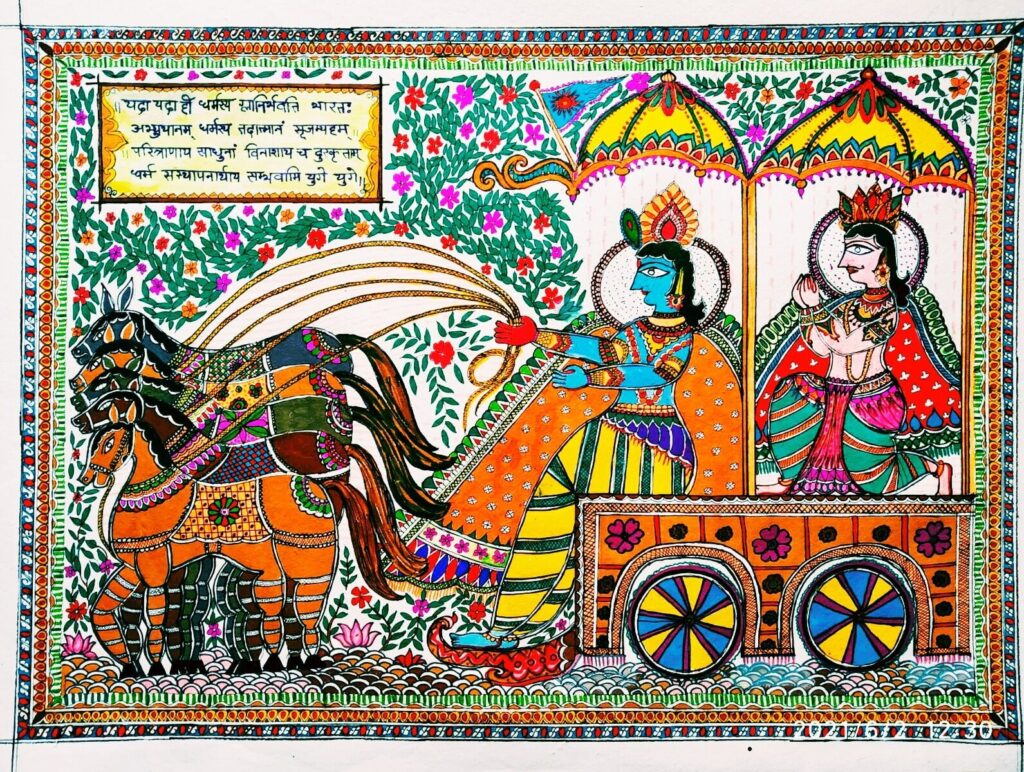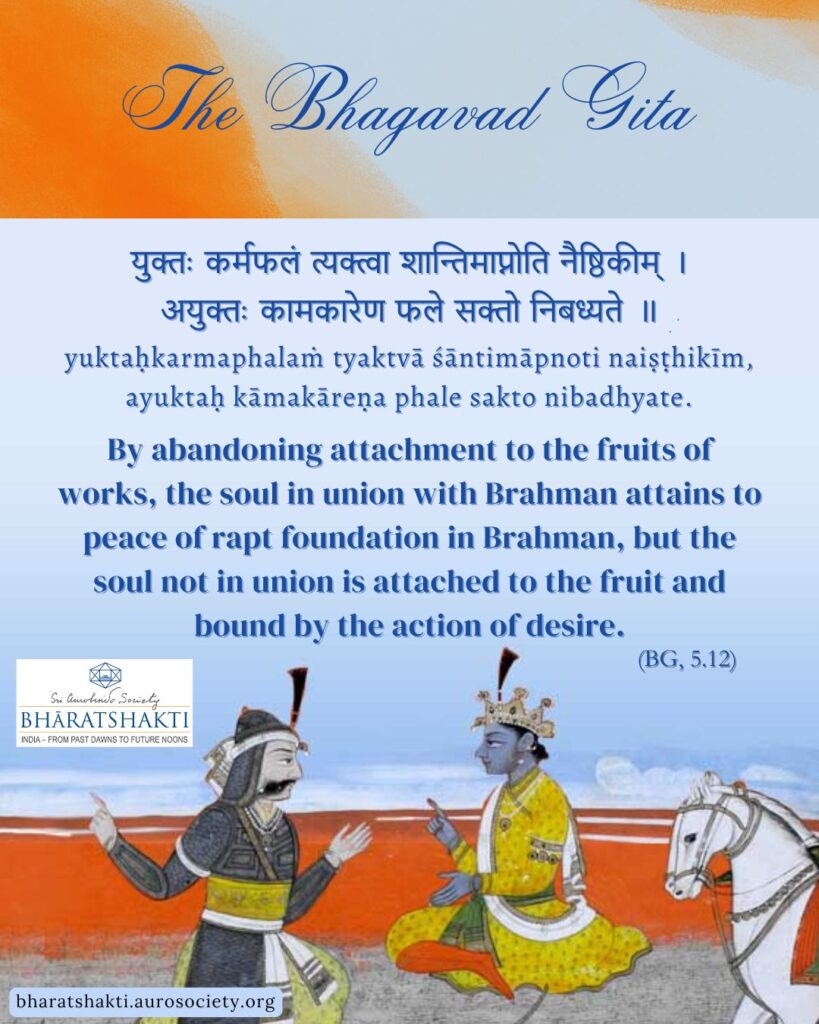Date: August 12, 2025
Part 11: The Yoga of the Renunciation of Action -1
Continued from Part 10
Chapter 5 of the Bhagavad Gita opens with Arjuna’s question on how to reconcile Karmayoga and the renunciation of works. He wants Sri Krishna to tell him with a clear decisiveness which of these is the better way. Sri Krishna responds that while both renunciation and Yoga of works lead to the soul’s salvation, the Yoga of works is higher than the renunciation of works. He adds that a saṃnyāsin (sannyāsin) is one who even while doing action has no dislikes or desires and is free from the dualities. Such a person is released swiftly from the bondage of all action.
A synthesis of Sānkhya and Yoga is again presented when the Gita says that anyone who practices either path in an integral manner receives the fruit of both. And the wise man who sees Sānkhya and Yoga as one, truly sees. Renunciation is difficult to attain without Yoga, says Sri Krishna. A strong emphasis is given to the difference between the inward and the outward renunciation, tyāga and saṃnyāsa. Outer renunciation is valueless without the inner renunciation, and in fact becomes unnecessary when there is the inward freedom.
The pure soul in Yoga, who has conquered the senses and mastered his self, and whose self has become the self of all existences, is not involved in action even when fully engaged in it. He is free in and by the knowledge that all actions are truly Nature’s. He knows that he himself does not act but actions are done through him as part of the Nature’s cosmic activity. With mind fixed in the Impersonal he has no sense of doer-ship when he sees, hears, tastes, smells, eats, moves, sleeps, breathes, speaks, takes, ejects, opens his eyes or closes them, he knows that it is only the senses acting upon the objects of the senses.
Sri Aurobindo’s explanation helps us understand deeply what is indicated here by Sri Krishna. He writes:
“By itself the idea might lead to a doctrine of the mechanical determinism of Nature and the perfect aloofness and irresponsibility of the soul; but the Gita effectively avoids this fault of an insufficient thought by its illumining supertheistic idea of the Purushottama. It makes it clear that it is not in the end Nature which mechanically determines its own action; it is the will of the Supreme which inspires her; … The reposing of works in the Impersonal is a means of getting rid of the personal egoism of the doer, but the end is to give up all our actions to that great Lord of all.”

Signs of a Divine Worker
It will be useful here to spend some time reflecting on what Sri Aurobindo speaks of the signs of a divine worker, a true Karmayogin. A liberated man is a large and universal doer of all works, kṛtsna-karma-kṛt; says the Gita. But he does them being fully poised in the silent calm of the soul, tranquilly in Yoga with the Divine. He knows that the Divine is truly the lord of all his works, and he is only a channel for these works through the instrumentality of his nature which is conscious of and subject to her Lord. Sri Aurobindo explains that to do all works in this liberating knowledge, without the personal egoism of the doer, is the first sign of the divine worker.
Freedom from desire is the second sign of the divine worker, says Sri Aurobindo. In the absence of the personal egoism of the doer, desire becomes impossible. The liberated individual may outwardly undertake works of all kinds like everyone else; in fact his or her works may be perhaps on a larger scale with a more powerful will and driving-force, “for the might of the divine will works in his active nature”. But inwardly, such a person is free from the will of desire, has abandoned all attachment to the fruits of the works. And when one does not work for the reward but solely as an impersonal instrument of the Divine, desire can find no place.

Sri Aurobindo adds an important clarification here when he says that for this liberated divine worker, even the desire to serve successfully the Divine is not there. For such a yogin knows that the real doer of the works is the Lord himself. And all glory belongs to that specific form of his Shakti missioned in his nature and not to his limited human personality. “The human mind and soul of the liberated man does nothing, na kiñcit karoti; even though through his nature he engages in action, it is the Nature, the executive Shakti, it is the conscious Goddess governed by the divine Inhabitant who does the work.” (ibid., p. 179)
Having abandoned attachment, not only to the fruits of the works but also to the works themselves when one acts reposing all works on the Brahman, one is not stained by any sin, just as the water does not cling to the lotus leaf. In this way, the personality of the instrumental doer ceases. Abandoning attachment such Yogins even while working outwardly work only for self-purification.
The Gita says that an embodied soul, perfectly controlling its nature, having renounced all its actions by the mind (inwardly, not outwardly), and in union with Brahman attains to the peace in Brahman. This is because the soul is now united with the one impersonal Soul in all, the all-pervading Impersonal which neither creates the works of the world nor the mind’s idea of the doer-ship, nor any joining of the works to their fruits. The all-pervading Impersonal accepts neither the sin nor the virtue of any creature; is indifferent to our joy in success and our grief in failure, master of all, calm, strong, pure, and equal in all things.
To be continued…

